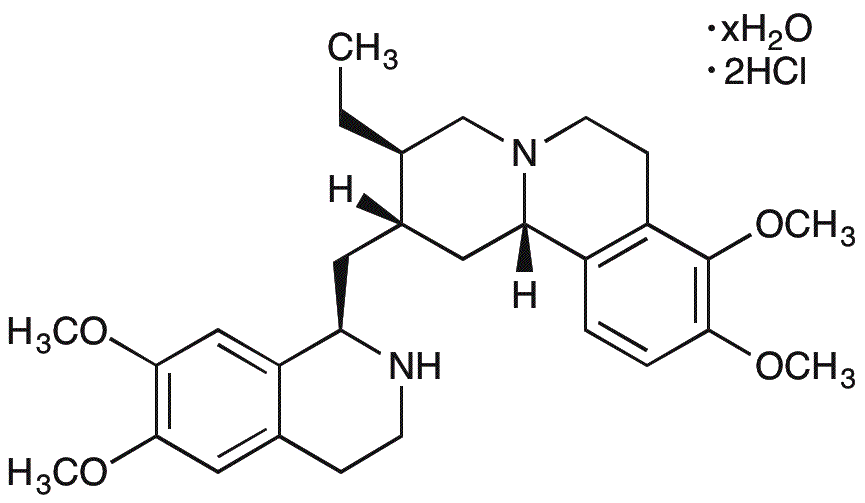Emetine dihydrochloride hydrate is widely utilized in research focused on:
- Antiparasitic Treatments: It is effective against amoebic infections, particularly amoebic dysentery, providing a crucial treatment option in areas where these infections are prevalent.
- Cell Culture Studies: Researchers use it to study cellular mechanisms and drug responses, as it can induce apoptosis in cancer cells, making it valuable in cancer research.
- Pharmaceutical Development: The compound serves as a lead in developing new drugs due to its unique structure and biological activity, particularly in the search for novel anticancer agents.
- Biochemical Research: It is employed in studying protein synthesis and gene expression, helping scientists understand cellular processes and develop targeted therapies.
- Veterinary Medicine: Emetine dihydrochloride hydrate is also applied in veterinary settings for treating parasitic infections in animals, ensuring better health outcomes.
General Information
Properties
Safety and Regulations
Applications
Emetine dihydrochloride hydrate is widely utilized in research focused on:
- Antiparasitic Treatments: It is effective against amoebic infections, particularly amoebic dysentery, providing a crucial treatment option in areas where these infections are prevalent.
- Cell Culture Studies: Researchers use it to study cellular mechanisms and drug responses, as it can induce apoptosis in cancer cells, making it valuable in cancer research.
- Pharmaceutical Development: The compound serves as a lead in developing new drugs due to its unique structure and biological activity, particularly in the search for novel anticancer agents.
- Biochemical Research: It is employed in studying protein synthesis and gene expression, helping scientists understand cellular processes and develop targeted therapies.
- Veterinary Medicine: Emetine dihydrochloride hydrate is also applied in veterinary settings for treating parasitic infections in animals, ensuring better health outcomes.
Documents
Safety Data Sheets (SDS)
The SDS provides comprehensive safety information on handling, storage, and disposal of the product.
Product Specification (PS)
The PS provides a comprehensive breakdown of the product’s properties, including chemical composition, physical state, purity, and storage requirements. It also details acceptable quality ranges and the product's intended applications.
Certificates of Analysis (COA)
Search for Certificates of Analysis (COA) by entering the products Lot Number. Lot and Batch Numbers can be found on a product’s label following the words ‘Lot’ or ‘Batch’.
*Catalog Number
*Lot Number
Certificates Of Origin (COO)
This COO confirms the country where the product was manufactured, and also details the materials and components used in it and whether it is derived from natural, synthetic, or other specific sources. This certificate may be required for customs, trade, and regulatory compliance.
*Catalog Number
*Lot Number
Safety Data Sheets (SDS)
The SDS provides comprehensive safety information on handling, storage, and disposal of the product.
DownloadProduct Specification (PS)
The PS provides a comprehensive breakdown of the product’s properties, including chemical composition, physical state, purity, and storage requirements. It also details acceptable quality ranges and the product's intended applications.
DownloadCertificates of Analysis (COA)
Search for Certificates of Analysis (COA) by entering the products Lot Number. Lot and Batch Numbers can be found on a product’s label following the words ‘Lot’ or ‘Batch’.
*Catalog Number
*Lot Number
Certificates Of Origin (COO)
This COO confirms the country where the product was manufactured, and also details the materials and components used in it and whether it is derived from natural, synthetic, or other specific sources. This certificate may be required for customs, trade, and regulatory compliance.


